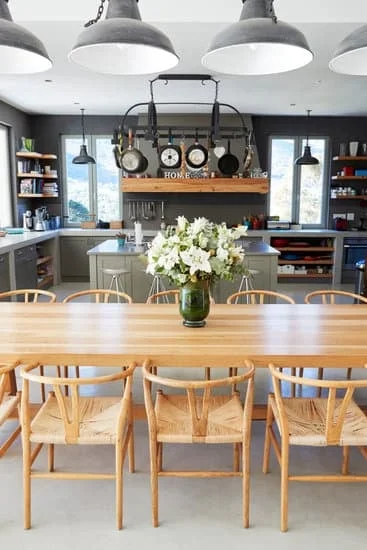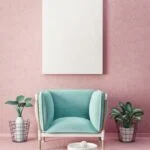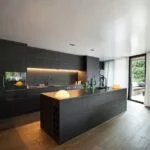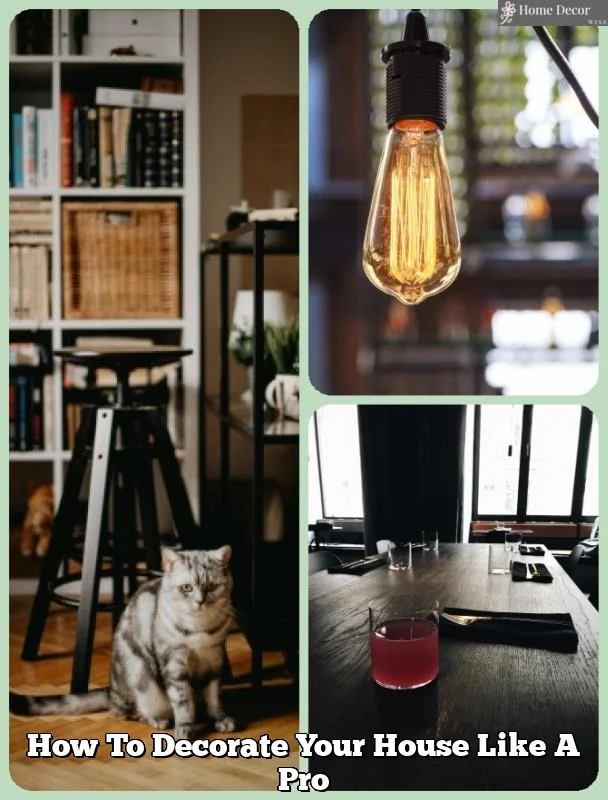DIY home decor has become a popular trend in recent years, offering homeowners the opportunity to personalize their living spaces without breaking the bank. From small, simple projects to more challenging endeavors, there is something for everyone looking to add a touch of creativity and individuality to their homes.
In this article, we will explore various aspects of DIY home decor, including assessing personal style, budgeting for projects, finding inspiration, and utilizing essential tools. Whether you are a beginner or an experienced DIY enthusiast, this guide will provide you with the knowledge and skills necessary to transform your space into something truly unique.
One of the main reasons why DIY home decor has gained so much popularity is the ability it gives individuals to express their own personal style. Rather than relying on mass-produced items found in stores, DIY enthusiasts can create one-of-a-kind pieces that reflect their unique aesthetic preferences. By exploring different techniques and experimenting with various materials, homeowners have the freedom to design spaces that truly embody who they are.
Another reason why DIY home decor has become increasingly popular is its affordability. Many people are looking for cost-effective ways to enhance their living spaces, and DIY projects offer just that. By using repurposed or upcycled materials and carefully budgeting for supplies, homeowners can achieve stunning results without breaking the bank. In addition, the satisfaction derived from completing a project with your own hands adds an extra layer of value and fulfillment.
In the following sections of this article, we will delve deeper into discovering your personal style, budgeting tips for DIY projects, as well as where to find inspiration. We will also discuss essential tools needed for successful DIY home decor and provide examples of both beginner-friendly projects and more advanced challenges. Furthermore, we will explore incorporating upcycled materials into your designs and offer advice on mixing and matching color schemes for a cohesive look.
Whether you’re renting or own your home, DIY home decor allows you to make modifications that suit your taste and preferences. We will explore how to personalize rented spaces without causing damage or violating lease agreements. Finally, we will discuss the immense satisfaction and benefits that come with creating a space that is uniquely yours.
So, get ready to embark on a journey of creativity and self-expression as we dive into the world of DIY home decor. With a little bit of inspiration and some elbow grease, you’ll be able to transform your living space into a haven that truly reflects your personality and style.
Assessing your personal style
Assessing your personal style is an important step in DIY home decor as it allows you to create a space that truly reflects your personality and tastes. Discovering your unique aesthetic can be an exciting journey of self-expression and creativity. Here are some tips to help you assess your personal style and bring it into your home decor projects.
Define Your Personal Preferences
Start by defining your personal preferences when it comes to colors, patterns, textures, and overall design styles. Take note of the things that catch your eye and make you feel inspired. Look through magazines, browse websites, visit showrooms, or create a mood board on platforms like Pinterest to gather visual inspirations that resonate with you. This will give you a clearer understanding of what appeals to you visually and help you narrow down your aesthetic preferences.
Consider Your Lifestyle
When assessing your personal style for home decor, it’s also important to consider your lifestyle and how you use each space in your home. Are you looking for a cozy and comfortable atmosphere? Or do you prefer a more sleek and modern look? Think about how you want each room to function and what elements would best serve those purposes. This will ensure that your DIY projects not only look great but also fit seamlessly into your daily life.
Showcase Your Interests
Another way to define your unique aesthetic is by showcasing your interests within your home decor. Do you have any hobbies or passions that can be incorporated into the design? For example, if you love photography, consider creating a gallery wall of framed photos or displaying vintage cameras as decorative pieces. By incorporating elements that reflect who you are as an individual, you can infuse a sense of authenticity into the space.
By assessing your personal style, defining preferences, considering lifestyle needs, and incorporating interests, you’ll be well on your way to discovering a unique aesthetic for your DIY home decor projects. Remember, the goal is to create a space that feels like a true reflection of yourself and brings you joy every time you walk through the door. Stay true to your style and have fun experimenting with different ideas to transform your living spaces into personalized works of art.
Budgeting for your DIY home decor projects
When it comes to DIY home decor, one of the main advantages is the ability to save money. By taking on the projects yourself, you can avoid the high costs of hiring professionals and purchasing expensive pre-made items. However, it’s important to have a budget in place to ensure that you stay within your means while still achieving the desired results.
Before starting any DIY project, it’s crucial to assess your finances and determine how much you’re willing to spend on materials and supplies. Creating a budget will help you prioritize your projects and allocate funds accordingly. Consider setting aside a certain amount of money each month specifically for your DIY endeavors.
In addition to setting a budget, there are several other tips for saving money on your DIY home decor projects. First, consider using upcycled materials or repurposing items that you already have at home. This not only reduces waste but also saves you money by eliminating the need to purchase new materials.
Second, shop around for the best deals on supplies. Compare prices at different stores or even look for discounts online. Finally, consider borrowing tools or equipment from friends or family instead of buying them outright.
| Material | Average Cost |
|---|---|
| Paint (gallon) | $25 – $50 |
| Wood (per board foot) | $2 – $8 |
| Fabric (yard) | $5 – $30 |
| $2 – $10 |
By budgeting and following these money-saving tips, you can successfully complete your DIY home decor projects without breaking the bank. With a little creativity and resourcefulness, you’ll be able to transform your space on a budget, all while achieving the unique aesthetic that reflects your personal style.
Research and inspiration
Research and inspiration are key components when it comes to DIY home decor. Finding new ideas can spark creativity and help you discover unique ways to decorate your space. Fortunately, there are plenty of resources available to inspire and guide you throughout your DIY journey.
One of the first places to look for inspiration is online platforms such as Pinterest, Instagram, and home decor blogs. These platforms are filled with a plethora of images, tips, and tutorials that can help you envision different design styles and techniques. You can create mood boards or save images that resonate with your personal style, creating a visual reference for your DIY projects.
Home decor magazines and books also provide a wealth of ideas and inspiration. Local libraries often have an extensive collection of design books that you can borrow for free. Additionally, visiting home goods stores, art galleries, or even attending local design fairs can give you hands-on exposure to different styles and materials that may spark your creativity.
Another great way to find ideas for DIY home decor is by joining online communities or forums dedicated to interior design and DIY projects. These communities allow you to connect with like-minded individuals who share their own projects, advice, and sources of inspiration. You can ask questions, seek feedback on your ideas, or simply browse through the discussions for new insights.
Remember that while it’s great to draw inspiration from various sources, it’s important to put your own unique twist on each project. Make sure not to directly copy someone else’s work but rather adapt it to suit your personal style and needs. With research and inspiration as your foundation, you’ll be well-equipped to embark on creative DIY endeavors for your home.
Essential tools for DIY home decor
Basic hand tools
When it comes to DIY home decor projects, having a set of basic hand tools is essential. These tools will help you measure, cut, and assemble various materials. Some of the must-have hand tools include a measuring tape, a level, screwdrivers (both Phillips and flathead), a utility knife, a hammer, and pliers. These tools will come in handy for a wide range of projects and will make your job much easier.
Power tools
While hand tools are sufficient for many DIY home decor projects, there are times when power tools can speed up the process and provide more precision. Some commonly used power tools include a drill/driver, a jigsaw, a circular saw, and a sander. It’s important to familiarize yourself with these power tools before using them and always follow safety guidelines. Investing in quality power tools will ensure that they last longer and can handle a variety of projects.
Safety equipment
Safety should always be your top priority when engaging in DIY home decor projects. Make sure you have the necessary safety equipment to protect yourself from accidents or injuries. This includes safety goggles to protect your eyes from debris or flying objects, ear protection if you’re working with loud power tools, gloves to protect your hands from cuts or splinters, and a dust mask if you’re working with materials that produce dust or fumes.
Additional supplies
In addition to basic hand tools and power tools, there are several other supplies that are essential for DIY home decor projects. These include adhesive products such as glue or double-sided tape for attaching materials together; various types of fasteners like nails, screws, or hooks; paint brushes or rollers for applying paint; sandpaper for smoothing surfaces; and painters tape for clean lines when painting walls or furniture.
Having these essential tools and supplies on hand will give you the confidence to tackle a wide range of DIY home decor projects. Remember to always prioritize safety and follow instructions carefully when using any tools or materials. With the right tools and some creativity, you can transform your home into a space that reflects your unique style and personality.
Starting small
When it comes to DIY home decor, starting small is a great way for beginners to dip their toes into the world of crafting and decoration. Not only are easy projects more manageable and less overwhelming, but they also allow individuals to build confidence and gain experience before tackling more challenging endeavors. Here are some ideas for easy DIY projects that beginners can try:
Paint a piece of furniture
One of the simplest yet most effective ways to transform the look of your home is by giving a piece of furniture a fresh coat of paint. Whether it’s an old wooden chair or a tired-looking bookshelf, painting it in a new color can instantly breathe new life into the space. Choose a color that matches your personal style or complements the existing decor in the room.
Create custom wall art
Personalized wall art can add character and charm to any room in your home. You don’t have to be an artist to create something beautiful – there are plenty of beginner-friendly techniques you can try. For example, you could make a collage using photographs and magazine cutouts, or experiment with abstract painting using acrylic paints and a canvas.
Make decorative throw pillows
Throw pillows are not only functional but also serve as decorative accents in any space. Making your own throw pillows allows you to choose fabrics that match your personal style while saving money compared to buying ready-made ones. Get creative with different patterns, colors, and textures, or even try sewing on some embellishments like buttons or beads.
Remember, the key to successful DIY projects is taking your time and enjoying the process. Starting with easy projects allows you room for experimentation and learning before moving on to more complex tasks. So gather your supplies, put on some music, and let your creativity flow as you transform your home one project at a time.
Intermediate DIY home decor projects
Once you have gotten comfortable with basic DIY home decor projects, it’s time to challenge yourself and expand your skillset. Intermediate DIY projects allow you to explore new techniques and materials, and can yield impressive results that will make your home truly unique. Here are some ideas for intermediate DIY home decor projects:
- Furniture refurbishing: Give old furniture a fresh look by refinishing or repainting. Sanding down wooden surfaces, applying a fresh coat of paint or stain, and replacing hardware can completely transform an outdated piece into a stylish addition to your home.
- Wallpaper accent wall: Create a statement in any room by adding a wallpaper accent wall. This project requires careful measuring and precision when cutting and lining up the wallpaper, but the result is a visually striking focal point.
- Custom shelving: Build your own custom shelves that fit perfectly into any space. Whether you choose simple floating shelves or more complex designs with multiple compartments, building your own shelves allows you to maximize storage while adding a personal touch.
- Macrame wall hanging: Get creative with macrame and create an intricate wall hanging that adds texture and visual interest to your walls. There are plenty of tutorials available online that can guide you through the process of creating different knots and patterns.
Remember to always do thorough research before tackling intermediate DIY projects. Watch video tutorials, read step-by-step guides, and gather all the necessary supplies before you begin. It’s also important to practice patience and take your time with these projects, as they may require more attention to detail than beginner-level projects.
Challenge yourself with these intermediate DIY projects and take pride in the new skills you acquire along the way. These projects will not only enhance the look of your home but also give you a sense of accomplishment and satisfaction.
Advanced DIY home decor projects
When you’ve gained confidence and mastered the skills from intermediate DIY projects, it’s time to take your creativity to the next level with advanced DIY home decor projects. These projects will challenge you and allow you to showcase your unique style and personality in your home. Here are some ideas to inspire you:
- Custom furniture pieces: Instead of buying standard furniture items, try building your own custom pieces. Consider creating a statement piece like a bookcase with integrated seating or a multi-functional console table that doubles as a bar cart.
- Wall murals and stenciling: Transform boring walls into works of art by painting intricate designs or patterns using stencils. You can choose to create a focal point by painting a large mural or use smaller stencils for an all-over pattern effect.
- Light fixture makeovers: Give outdated light fixtures a modern twist by repurposing them or giving them a fresh coat of paint. Consider using spray paint in metallic finishes for an industrial look or experimenting with different colors for a more eclectic feel.
- Textured wall treatments: Add dimension and visual interest to your walls by incorporating textured treatments such as shiplap, board-and-batten, or faux brick panels. These techniques can be used on an accent wall or throughout an entire room.
To successfully complete these advanced DIY projects, there are certain tools and equipment that are essential. Some must-have supplies include a power drill, circular saw, miter saw, sander, paint sprayer, and various hand tools like hammers, screwdrivers, and pliers. Additionally, it’s important to have safety gear such as safety glasses, gloves, and protective masks when working with power tools or chemicals.
Remember that advanced DIY projects may require more time, patience, and skill compared to beginner or intermediate projects. It’s essential to thoroughly research and plan your projects before diving in. Don’t be afraid to challenge yourself and experiment with new techniques and materials.
Pushing your creativity to the next level through advanced DIY home decor projects not only allows you to have unique and personalized items in your home, but it also gives you a sense of pride and accomplishment. These projects can become conversation starters and add a wow factor to your space. So go ahead and unleash your imagination as you take on these exciting DIY challenges.
Incorporating upcycled materials
One of the most exciting aspects of DIY home decor is the opportunity to transform everyday items that would otherwise be discarded into stunning pieces for your living space. Upcycling, or repurposing materials, not only helps reduce waste but also adds a unique character to your home. Here are some ideas and tips on how to incorporate upcycled materials into your DIY projects:
- Salvage old furniture: Instead of buying new furniture, consider giving new life to old pieces by refinishing or repainting them. With a fresh coat of paint and some updated hardware, an old dresser or table can become a centerpiece in your home.
- Creative use of pallets: Wooden pallets are versatile and can be transformed into various functional pieces such as coffee tables, shelves, or even headboards. Sand them down and give them a fresh stain or paint finish to match your decor.
- Repurpose glass bottles and jars: Don’t throw away empty glass bottles and jars – they can make beautiful vases, candle holders, or storage containers. Paint them with glass paints or wrap them with twine for added texture.
- Turn old doors into statement pieces: If you come across an old door at a salvage yard or thrift store, imagine the possibilities. A vintage door can be transformed into a unique tabletop or a headboard for your bed.
- Create artwork from salvaged materials: Embrace your creativity by turning scrap metal, wood scraps, or discarded tiles into stunning works of art for your walls. Use these materials to create mosaics, sculptures, or unique wall hangings.
Remember to approach upcycled projects with safety in mind – wear protective gear when working with tools and ensure that any repurposed materials are thoroughly cleaned before use. Upcycling not only allows you to express your creativity but also contributes to a more sustainable and environmentally friendly lifestyle. Get started on your upcycled DIY projects and see how you can turn trash into treasure in your home.
Mixing and matching color schemes
Mixing and matching color schemes is an essential aspect of DIY home decor, as it can greatly impact the overall look and feel of your space. By carefully selecting and combining colors, you can create a harmonious and cohesive environment that reflects your personal style.
When choosing color schemes for your DIY projects, it is important to consider the mood and atmosphere you want to achieve in each room. Color psychology plays a significant role in how colors affect our emotions and perceptions. For example, warm colors such as reds, oranges, and yellows tend to evoke feelings of energy and excitement, while cool colors like blues, greens, and purples are more calming and soothing.
To create a harmonious space, you can follow different approaches when mixing and matching colors:
- Analogous Colors: This involves using three neighboring colors on the color wheel. For example, combining shades of blue-green with blue or green creates a visually pleasing effect that is easy on the eyes.
- Complementary Colors: These are colors that are opposite each other on the color wheel. For instance, pairing shades of purple with yellow or orange can create a high-contrast look that adds visual interest to a room.
- Monochromatic Scheme: This is achieved by using varying shades of the same color. It creates a cohesive look while still allowing for depth and visual interest.
- Triadic Colors: This involves using three equally spaced colors on the color wheel. For instance, combining reds with blues and yellows creates a vibrant but balanced color scheme.
| Color Combination | Meaning/Effect |
|---|---|
| Blue + White | Calmness & serenity |
| Green + Brown | Nature-inspired, grounding |
| Pink + Gold | Elegance & femininity |
| Black + White | Drama & sophistication |
| Purple + Gray | Royal & luxurious |
DIY home decor on a rental property
DIY home decor is not limited to homeowners, as even those who live in rental properties can still make temporary modifications to personalize their space. Renting a home often comes with restrictions on making permanent changes, but that doesn’t mean you can’t add your own touch and make the space feel like your own.
One way to customize a rental property without violating any lease agreements is by utilizing removable decor. Temporary wallpapers, adhesive tiles, and wall decals are great options for adding color and pattern to your walls without causing damage. These can easily be removed when it’s time to move out and leave no trace behind.
Another way to make temporary modifications is by using furniture and accessories to enhance the overall aesthetic of the space. Choose pieces that reflect your personal style and can be easily moved or replaced. This could include things like area rugs, curtains or blinds, throw pillows, and wall art. By selecting items that are portable, you can take them with you when you move or switch them out for a fresh look.
Additionally, consider investing in removable lighting solutions to brighten up your rental property. Table lamps, floor lamps, or string lights can easily be added or removed from a space without causing any damage. They not only provide functional lighting but also create an inviting atmosphere.
Personalizing your space
One of the most exciting aspects of DIY home decor is the ability to create a space that reflects your own personal style and tastes. Personalizing your home allows you to add unique touches that make it truly yours. Whether you prefer a minimalist, bohemian, or traditional aesthetic, there are countless ways to incorporate elements that reflect your personality.
When personalizing your space, it is important to consider both the big picture and the small details. Start by thinking about the overall vibe or theme you want to achieve in each room. This can help guide your decision-making process when choosing colors, patterns, and furniture styles. For example, if you want to create a cozy and rustic living room, you may opt for warm earth tones, distressed wood furniture, and cozy textiles like faux fur.
Next, think about how you can incorporate small details that reflect your interests and hobbies. This could be as simple as displaying artwork or photographs that hold sentimental value or incorporating decor items that showcase your favorite books or movies. Pay attention to the accessories you choose as well – throw pillows, curtains, and rugs can all contribute to the overall personalized look of a room.
In addition to adding decor items that reflect your personality, don’t forget about the power of scent. Candles or essential oil diffusers can help create a cozy atmosphere while infusing your space with scents that resonate with you. Consider using candles or oils in calming scents like lavender or vanilla for relaxation in a bedroom or energizing scents like citrus for a lively kitchen.
| Item | Example |
|---|---|
| Wall Art | A collage of travel photographs |
| Accessories | A vintage typewriter as a decorative piece |
| Candles | Fresh linen scented candles in the living room |
Conclusion
In conclusion, DIY home decor not only allows you to create a beautiful and unique space, but it also provides a sense of satisfaction and numerous benefits. By taking on DIY projects, you have the opportunity to discover and embrace your personal style, all while saving money in the process.
One of the greatest rewards of DIY home decor is the ability to personalize your space. Through assessing your personal style and incorporating unique touches that reflect your personality, you can truly make your house feel like a home. Whether it’s repurposing an old piece of furniture or creating custom wall art, DIY projects allow you to infuse your space with pieces that are meaningful to you.
Additionally, engaging in DIY home decor projects can be incredibly fulfilling. The feeling of accomplishment when completing a project and seeing the transformation of your space can bring immense joy and pride. Moreover, taking on these projects promotes creativity, problem-solving skills, and resourcefulness.
Not only does DIY home decor provide personal satisfaction, but it also offers financial benefits. Budgeting for and executing DIY projects can help you save money compared to purchasing pre-made items or hiring professionals for renovations. With research and inspiration readily available online, finding affordable materials and techniques has become easier than ever.
Overall, engaging in DIY home decor not only allows you to express yourself creatively but also provides a sense of accomplishment and financial savings. So why wait? Start exploring different projects today and unleash your inner decorator.
Frequently Asked Questions
How to decorate your home step by step?
Decorating your home step by step can be a fun and creative process. Start by envisioning the overall theme or style you want to achieve. You can gather inspiration from magazines, online platforms, or even by visiting home decor stores. Once you have a clear idea, begin with decluttering and organizing your space. This will lay the foundation for a clean and tidy look.
Next, focus on selecting a color scheme that complements your style and creates a harmonious atmosphere. Pay attention to the furniture arrangement and consider adding statement pieces that reflect your personality. Enhance the ambiance through lighting fixtures, curtains, or blinds. Lastly, add finishing touches with decorative items such as artwork, plants, rugs, and throw pillows that bring warmth and character to your space.
How can I make my house look nice?
Making your house look nice is all about paying attention to details and creating a cohesive design scheme. Start by decluttering each room and giving it a deep clean to create a fresh canvas for your decor ideas. Consider painting the walls with neutral colors or shades that match your desired aesthetic as this can instantly transform the overall appearance of the house.
Additionally, pay attention to lighting as it greatly impacts the ambiance of each room – choose appropriate fixtures that align with the purpose of the space (e.g., bright for task-oriented areas like kitchens). Invest in key pieces of furniture that are both functional and visually appealing; consider shopping at thrift stores or second-hand markets for unique finds at affordable prices. Finally, personalize your space with art, family photos, or sentimental objects that make you feel at home.
How do you decorate your house on a low budget?
Decorating your house on a low budget requires creativity and resourcefulness while still achieving an appealing look. Consider starting by repurposing items you already own to give them new life – paint old furniture or change their hardware for an updated appearance that fits with your style preferences. You can also explore Do-It-Yourself projects like creating artwork from inexpensive materials or sewing your own curtains or pillow covers.
Thrift stores, flea markets, or online classifieds can be great sources for affordable decor items – what may seem like outdated pieces at first glance can often be transformed into trendy and unique additions to your home through a little creativity. Additionally, consider borrowing decor items from friends and family or doing a swap where you trade decor items you no longer want or use. Finally, embrace the power of nature by incorporating plants and flowers as they bring life, color, and freshness to any space without breaking the bank.

I’m thrilled to be your companion on this exciting journey through the world of home decor and design. With a passion for turning houses into homes and a keen eye for the finer details, I’m here to help you transform your living spaces into beautiful, functional, and meaningful havens.





